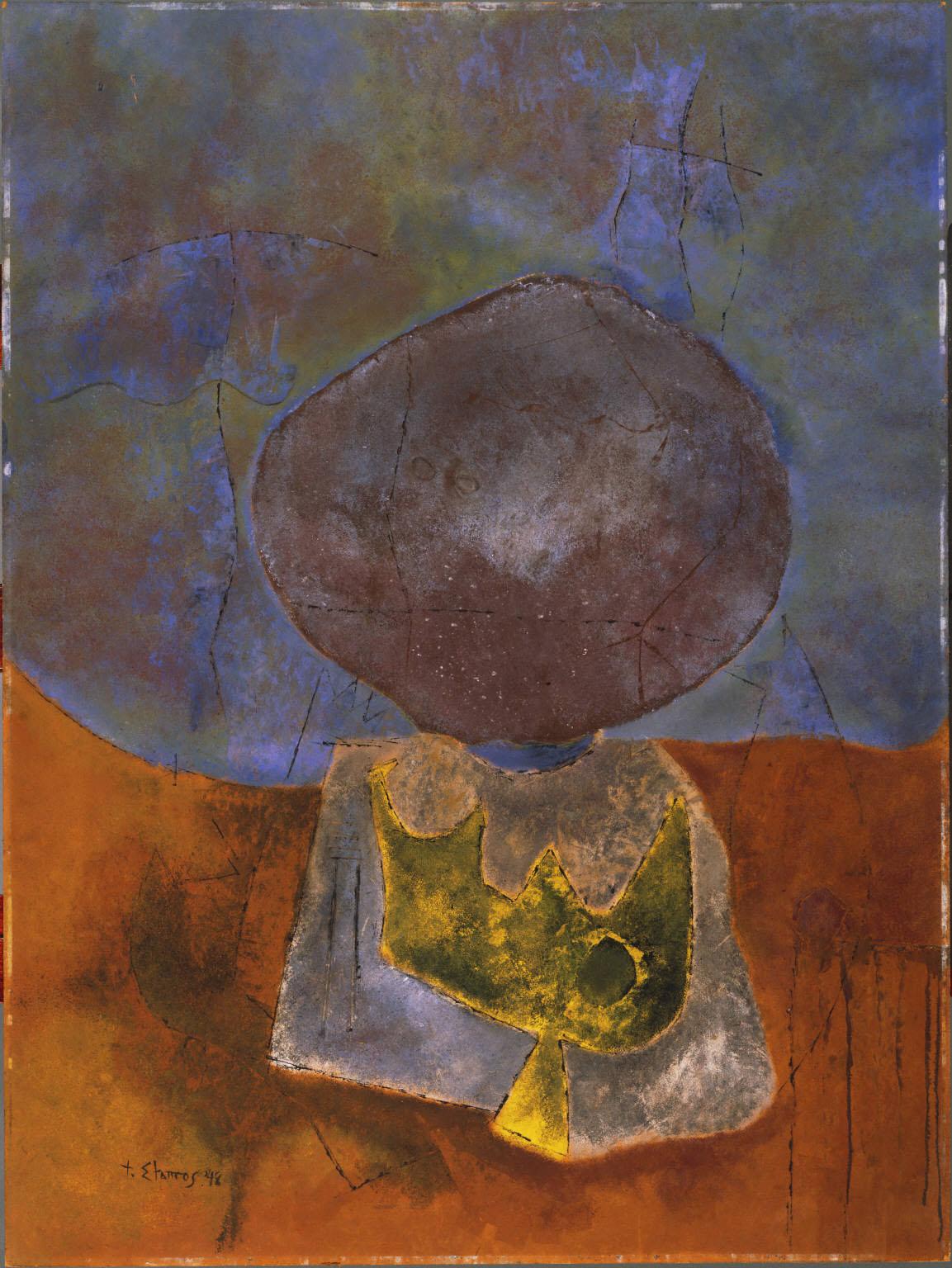The Sacrifice of Kronos, No. 2
Theodoros Stamos ( 1948 )

Theodoros Stamos brought to his work a complex combination of interests: his Greek heritage, knowledge of universal myth, intense observation of nature, admiration of oriental philosophy, and a yearning to attain spiritual meaning through art. In a manner inspired by the surrealists, Stamos arrived at his images spontaneously, extracting elements of nature and myth from his subconscious to create abstract, biomorphic images.
The Sacrifice of Kronos, No. 2, painted in 1948, is a prime example of Stamos’s many interests. It portrays the drama and terror of the story of the Titan Cronus (Kronos in Greek spelling), who devoured his children in fear of the prophecy that one of his offspring would usurp his power. When Cronus’s son Zeus was born, his mother, Rhea, wrapped a stone in clothing, and Cronus swallowed it, believing it was their son. The prophecy took its course, as Zeus eventually overthrew Cronus, becoming the king of the gods. Stamos has depicted the moment of the sacrifice in the painting. Two ghost-like eyes appear in the stone, alluding to Cronus’s misguided belief that it was his son he was engorging. Cronus, with gaping mouth, appears to be crushed under the weight of the massive boulder. Though this is a classic Greek mythological story, the theme of this ancient myth may well have been a metaphor for post-World War II power struggles.